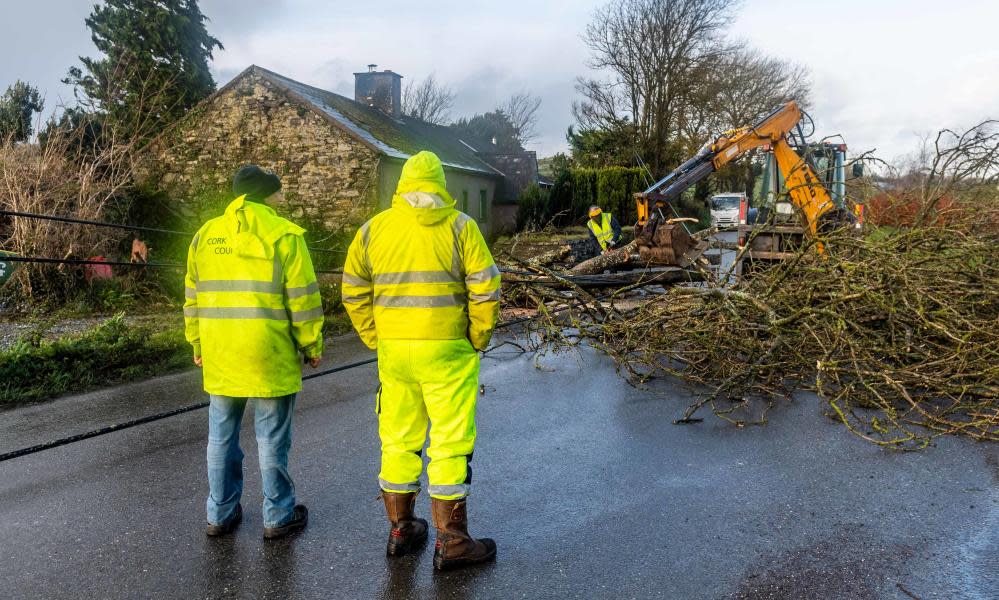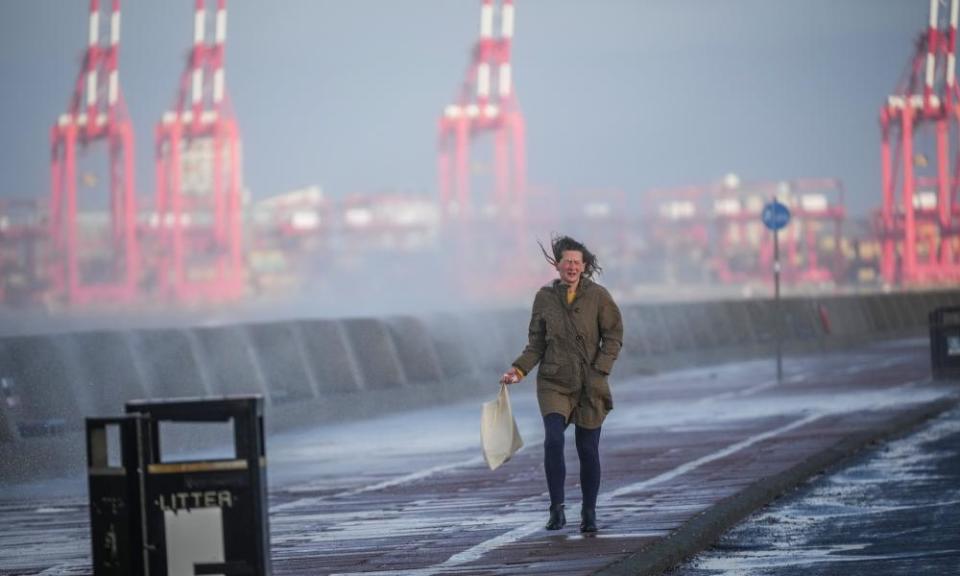Storm Barra leaves thousands without power in Ireland

More than 56,000 homes and businesses in Ireland have been left without power after Storm Barra made landfall, with winds gusting up to 80mph (130km/h) as it moved east throughout the day.
Heavy rain, sleet and snow fell on Tuesday over the north-west of Ireland and Scotland, threatening further disruption to areas only just recovering from lengthy power cuts in the wake of Storm Arwen. .
Ireland’s national weather service, Met Éireann, said the storm could pose a danger to life over the next two days.
The UK was also braced for strong winds and heavy showers, less than two weeks after Storm Arwen caused significant damage to parts of the country.
Gusts of 69mph were recorded near Stranraer, in Dumfries and Galloway, while seven schools in the region have been shut. Restrictions are in place on bridges across Scotland including Skye and Erskine in the west, and Dornoch, the Forth road and Tay bridges on the east coast.
The Scottish Environmental Protection Agency (Sepa) warned the public that, as the storm moves north-east across the country, “we expect to see coastal flooding due to the combination of high tides, storm surge and large waves leading to potential wave overtopping”.
In Aberdeenshire, one of the areas worst-hit by the damage of power cuts caused by Arwen, the council assured residents that welfare arrangements would remain in place over the coming days.
Power cuts were reported in Cork, Kerry, Dublin and Limerick and people in three counties on the west coast were advised to remain indoors.
Flooding in Cork and Kerry rendered several roads unpassable because of water or fallen trees.
The storm coincided with high tide in Cork city, with flood waters flowing across South Mall from riverside quays in Morrison’s Island.
Very unpleasant conditions in Donegal this morning. Recorded a little earlier, hands free #StormBarra pic.twitter.com/XhxkutpBcn
— Greg Hughes (@GregHughes2) December 7, 2021
A rare red weather alert was in place in counties Cork, Kerry and Clare, and orange wind warnings were issued for Limerick, Waterford, Galway, Mayo, Wexford, Dublin, Louth, Wicklow and Meath.
Schools in 12 counties subject to red and orange warnings were advised to close, while Aer Lingus cancelled all flights in and out of Cork with some services disrupted in Dublin.
In the UK, the Environment Agency issued three flood warnings for England’s south coast, as well as 35 flood alerts.
Severe gales have led to travel disruption across the Isle of Man, with cancelled daytime ferry services between the island and Lanchashire and several blocked roads due to fallen trees.
Fallen trees have blocked several roads around the island.
Yellow snow warnings were in place in northern England and Scotland, with blizzards and snowfall of up to 20cm causing treacherous conditions on roads at higher altitudes, the Met Office said.
The Met Office meteorologist Aidan McGivern said Storm Barra’s gusts and impact would be “a notch down” compared with Arwen, which led to widespread power cuts on 26 November, some of which had not yet been restored.

Heavy rain was forecast in Northern Ireland and the south-west of the UK with drifting snow and blizzards turning heavy across northern hills.
On Monday, while about 1,600 households in the north-east of England were still without electricity almost two weeks after Storm Arwen struck, Boris Johnson said he had spoken to the chief executive of Northern Powergrid and had been “assured [customers] would be reconnected tomorrow at the latest”.
That evening the electricity supplier said it had reduced the number of homes and businesses affected to 700.
Ice was forecast overnight in parts of the UK before Barra’s arrival and the Met Office issued a yellow warning for potentially hazardous driving conditions in western Scotland and north-west England.
• This article was amended on 7 December 2021. A picture caption was corrected to refer to “New Brighton” rather than “Brighton” and a reference in the text to “the north-east of the UK” was changed to “the north-east of England”.

 Yahoo Movies
Yahoo Movies 
